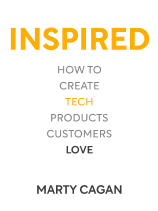

This article is an excerpt from the Shortform book guide to "Inspired" by Marty Cagan. Shortform has the world's best summaries and analyses of books you should be reading.
Like this article? Sign up for a free trial here .
What role does the product development engineer play in the development process? How important are they and what are their responsibilities?
In a product development team, engineers are considered to be one of the top three most important roles. There are usually multiple engineers working on different parts of a project and they often have the most extensive knowledge about the product.
Here is the full description of the product development engineer’s role.
Roles of a Product Development Team
For a product to be successful, it needs a good team working on it. This is how to create an effective team, and thus give a product the best chance of success.
Every team needs to be filled with missionaries rather than mercenaries. In other words, employers should look for and cultivate those who truly believe in the product and advocate for it rather than people who only do what they’re told.
Here are the three key positions:
- The product manager
- The product (or UX) designer
- The engineers
This article will focus on product development engineers.
Key Position #3: Engineers
Many companies think of engineers as simply cogs in their larger machinery. They are there to fix bugs and follow specific directions on how to build products. However, engineers can significantly contribute to the success of a product beyond applying their technical skills.
Key Responsibilities
Product development engineers are responsible for the coding and any other building that is necessary to create the product. While there is one product manager per team and generally one product designer, there are usually between two and 10 engineers per team.
Engineers are useful beyond pure coding, though. Because they’re intimately familiar with the way the code and machinery work, they often have the best understanding of how to expand the product (and the limitations on doing so).
Chief Technology Officer
The Chief Technology Officer (CTO) heads the engineering department. The CTO is similar to the lead product manager and product designer, but is responsible for making sure that all of the code written and other engineering done over the various products fits together. This person understands the greater strategic goals of the organization and how engineering can contribute to those goals. The CTO has six duties:
- Hire strong employees and help to develop their skills and retain them.
- Work with the rest of the leadership to decide on the strategic direction of the company.
- Make sure the engineers can deliver technically on the strategic vision in a timely manner.
- Create and sustain a structure that allows the company to scale technology quickly and reliably.
- Encourage engineers, especially the more senior ones, to contribute strategic ideas as well as programming.
- Act as the technological company liaison to potential clients, investors, or other partners.
The Importance of Engineers to the Product Manager
Engineers and the product manager need a good relationship so they can share ideas and solutions. This will benefit the team because engineers are often knowledgeable about the inner workings of the product in a way that product managers are not, and so they can often contribute unique ideas about how to build products.
It’s largely up to the product manager to build this relationship. Every day, product managers solicit engineers’ ideas, and engineers ask product managers for clarification on the goals of the product. By being knowledgeable but also soliciting feedback, product managers can turn engineers into true missionaries.
Too often, though, product managers don’t have any experience with or understanding of what engineers are working on, and so the relationship breaks down before it can even get started. This is a big reason why the product manager should understand some computer science as well as some business.
Additionally, if, as a product manager, you don’t know something, it’s better to ask for an explanation than to guess your way through. Engineers will spot the latter strategy, and you’ll lose credibility.

———End of Preview———
Like what you just read? Read the rest of the world's best book summary and analysis of Marty Cagan's "Inspired" at Shortform .
Here's what you'll find in our full Inspired summary :
- A two-step plan for creating and sustaining successful technology products
- Why product managers are so important in product development
- How to avoid some of the biggest pitfalls that most tech companies fall into






